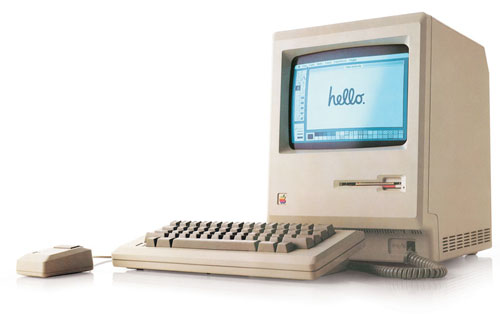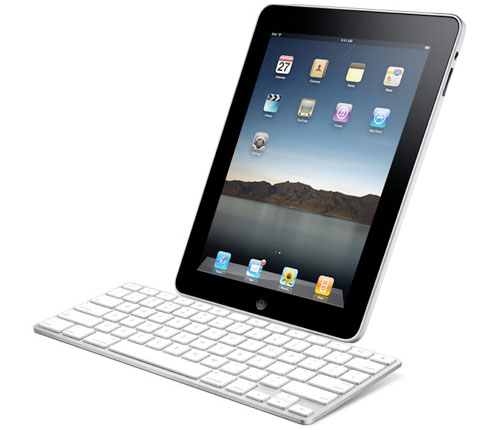Hosted by site sponsor WebMate.
iPad Q&A
Published January 31, 2010
All Apple Q&As >> iPad Q&A (Home) | Also see: All iPad Specs
To be notified of new Q&As, sign up for EveryMac.com's bimonthly email list.
What market is the iPad designed to reach? What type of needs does it address? Who is expected to buy it?
This Q&A was written prior to the shipment of the original iPad. Some of the mentioned deficiencies have been addressed by subsequent iPad models. Nevertheless, the general analysis remains quite useful for the product category and "historical" interest.
Officially, Apple has positioned the iPad as a "new category" of device between handheld computers and notebooks and intends for it to compete initially with netbooks, tablet computers, handhelds, and e-readers.
As mentioned elsewhere in the iPad Q&A, Apple formally notes that the device is for "browsing the web, reading and sending email, enjoying photos, watching videos, listening to music, playing games, reading e-books and more."
Beyond this, however, the iPad is an entirely new computing platform. It's not marketed as such, for now, and it's easy to look at the iPad in its current incarnation as a "big iPod touch" and nothing more. It's easy to point out its many deficiencies -- no true system-wide multitasking, no built-in printing, no Flash support, and no webcam, among others -- and dismiss it. There certainly are advantages and disadvantages to its "closed" software and hardware that are well worth debating.
Information Appliances
However, focusing on what the iPad is at this moment overlooks its potential to become the all-in-one "information appliance" those at the upper echelon of Apple always have intended for the Macintosh.

Photo Credit: Apple Computer (Original 128k Macintosh)
The iPad is more than just a modern vision of Macintosh computing, however. It also is a recognition that over the last 15 years or so, people have shifted from using computers to produce information to primarily using computers to consume information.
If one thinks about the computer usage of the average student or executive, then adds writing reports, crunching numbers, and preparing presentations to the list of "official" tasks that Apple intends for the iPad, it likely describes these users' needs.

Photo Credit: Apple, Inc. (iPad with Keyboard Dock Accessory)
iPad Software Offerings
By preparing basic versions of the iWork productivity applications -- which include the Pages word processing program, Numbers spreadsheet program, and Keynote presentation program for US$9.99 each -- and selling an iPad "dock" with a physical keyboard for US$69, Apple already has addressed the "content production" needs of many.
The iPad versions of the iWork productivity suite are capable of opening Word, Excel, PowerPoint, and PDF documents (and saving in Word and PDF as well as the native formats of each application), likely with some formatting issues. Nevertheless, with a bit of creativity, it already will be possible for many people to use an iPad to complete all the tasks that they would using a MacBook.
Likewise, because the iPad is compatible with the many thousands of applications for the iPhone and iPod touch, many other needs -- such as modest gaming -- are addressed, as well.
Initial iPad Market
None of this is to say that people immediately will view the iPad as a potential notebook replacement -- a thin, modern version of a PowerBook Duo, if you will. For the time being, it is unlikely that many will buy an iPad in lieu of a Mac or Windows PC.
The iPad initially will be purchased by gadget early adopters, Apple enthusiasts (fanboys, if you prefer), those who have it in mind for a particular purpose -- paired with speakers as an alternative to a bookshelf stereo, hooked to a television to share family photos, connected to a projector to give presentations, or in the kitchen to lookup recipes online, perhaps.
No doubt, some will purchase it instead of a netbook for basic web browsing or instead of an e-reader for reading digital books. Maybe some even will buy the iPad instead of an iPod touch or Nintendo DS for portable gaming.
The Future
As future versions become more powerful and capable, add new features, and become more varied to better meet the needs of different users, the iPad has significant potential to disrupt the computer industry.
When the original iPod was introduced on October 23, 2001, it had a small monochrome display, 5 GB of storage, was designed to play only music, and cost US$399. In fewer than six years, the iPod evolved into the iPhone/iPod touch handheld computing platform with color multitouch displays and rather sophisticated applications. The high-end iPod touch was unveiled with 16 GB of storage for the same price as the original iPod despite using more advanced, and expensive, flash RAM.
Should the iPad be accepted by the market, there is little reason to think that it won't have a similar trajectory as the iPod, and more-and-more users will consider buying an iPad or derivative products in lieu of a traditional Mac or Windows notebook, particularly should a "killer app" emerge that takes advantage of the multitouch interface in a new way. Apple is bluntly marketing the iPad as a "whole new gold rush" for app developers, so many will try to create new and interesting applications.
However, power users -- those who still use computers more to produce content than consume it -- always will need the most powerful systems available. These users are quite attached to Mac OS X and hope it continues to do well. Likewise, no doubt, Apple would be happy to sell everyone an iPhone, iPad, and a Mac.
Ultimately, only the market can decide whether or not the iPad will be accepted, but with a consumer-friendly entry-level price of US$499, a simple and easy-to-use design, and the potential ability to meet many users' entire computing needs, the iPad looks well-positioned to dwarf Mac sales in the coming years. The iPad very well could become the modern "computer for the rest of us."
Permalink | Report an Error/Typo | Sign Up for Site Update Notices
<< iPad Q&A (Main) | All Apple Q&As
Established in 1996, EveryMac.com has been created by experts with decades of experience with Apple hardware. EveryMac.com includes, and always has included, original research incorporating detailed, hands-on inspection of packaging, computers, and devices as well as extensive real-world use. All information is provided in good faith, but no website or person is perfect. Accordingly, EveryMac.com is provided "as is" without warranty of any kind whatsoever. EveryMac.com, and the authors thereof, shall not be held responsible or liable, under any circumstances, for any damages resulting from the use or inability to use the information within. For complete disclaimer and copyright information please read and understand the Terms of Use and the Privacy Policy before using EveryMac.com. Copying, scraping, or use of any content without expressed permission is not allowed, although links to any page are welcomed and appreciated.
